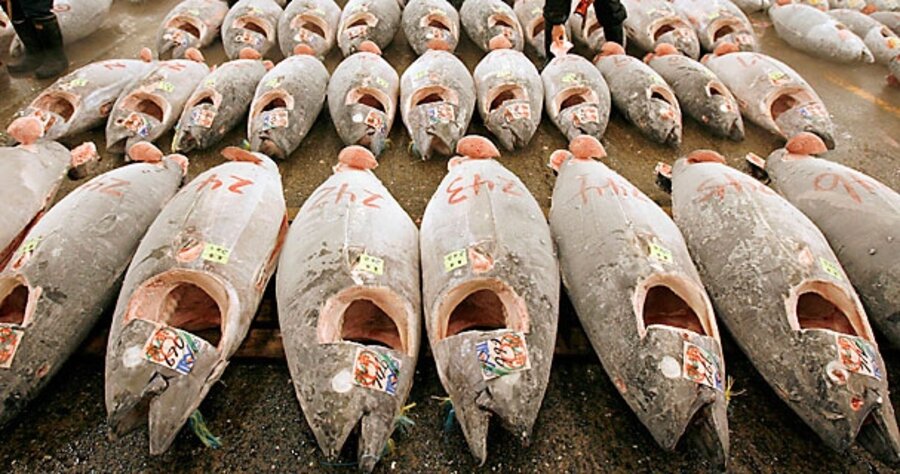New bluefin catch rule riles scientists
Loading...
| Madrid
The International Commission for the Conservation of Atlantic Tunas (ICCAT) this week moved to reduce bluefin tuna fishing quotas in the eastern Atlantic and Mediterranean by less than was hoped for by some – a controversial decision that the European Commission supports but that critics say will irrevocably damage an already fragile tuna population.
The new levels still far exceed those recommended for safeguarding the population, scientists who work in the field say, and may drive the wild fish the ICCAT is supposed to protect into extinction.
"There are only 25,000 to 30,000 adult bluefins in the region," says Brian MacKenzie, professor of fisheries at Technical University of Denmark and lead scientist of a major study on tuna populations. "The quota that ICCAT approved this week will basically take all of them." Sebastián Losada, a Greenpeace spokesman who attended the meeting, was even more direct. "The game's over."
Going into the Marrakech meeting, hopes ran high among some that ICCAT would sharply reduce its quotas, and possibly impose a moratorium on tuna fishing in the zone. At a meeting of the International Union for Conservation of Nature held in Spain in September, many key players in the tuna industry, including Spain, Italy, and Japan, voted in favor of a moratorium. But when it came to creating a new law, those ambitions were apparently set aside.
At the ICCAT meeting this week, the 46 members agreed to a reduced quota of 22,000 tons per year, a level significantly higher than the 8,500 to 15,000 tons ICCAT's scientists had recommended. The organization also agreed to step up monitoring of fleets in an effort to prevent illegal overfishing, and reduced the fishing season for one vessel type by four months.
For the European Commission, which resisted a more marked reduction in quotas, the agreement is a success. In a press release, European Commissioner Joe Borg said, "We need tough action to secure the future of the bluefin tuna stock, and ICCAT's revised recovery plan demands further sacrifices from the fishing industry, with major immediate cuts in catch levels and fishing seasons, and reductions in both fishing and farming capacity"
But conservation groups say economic concerns determined the outcome. Globally, tuna fishing is a $1.6 billion industry – thanks in large part to sushi's popularity – and for fishermen in Spain, Italy, and France, it's an important source of income. "Nobody listened to the science. This was about business," says Gemma Parkes, of the Mediterranean branch of the World Wildlife Fund.
So much so, she says, that some smaller nations who originally supported a lower quota were reputedly pressured by the European Commission to change their position. "Belize and Guatemala early on signed documents supporting the lower numbers – their names disappeared from later rounds," she says. "They had been warned that they were risking their bilateral trade agreements, that if they opposed the higher quotas, the EU wasn't going to buy bananas from them."
Fernando Curcio, director of fisheries in Spain's environment ministry, denied knowledge of such tactics. "This was a consensus agreement," he says, adding that the decision would keep the region's small fishermen in business.
But Mr. MacKenzie asks what the fishing industry will do if tuna disappears. "In two years, [will they] sell off all their boats? Or are they going to go out and catch the last tuna?"





